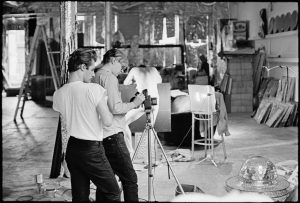The artist Gavin Turk on creating an atypical exhibition that explores the landscape of collective trauma
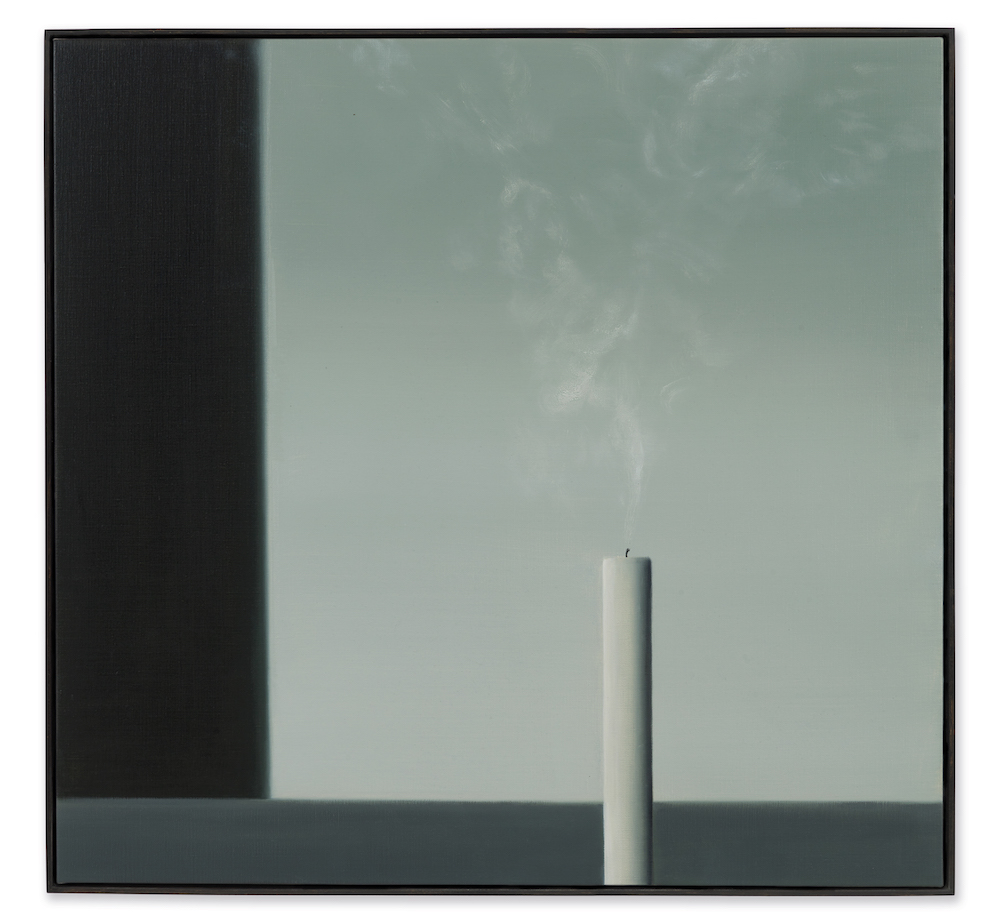
One artist you might not readily associate with sombre, reflective and meditative works is the celebrated Gavin Turk, the handlebar moustachioed once-upon-a-time YBA whose name has become synonymous with quite literally turning trash, and, more recently, his own human effluence, into art. In fact, over the last thirty years you could say the now middle-aged Turk has deftly positioned himself as this gilded isle’s arch art prankster, engaging his audience in multiple wry, witty and self-referential takedowns of the establishment that are generally somewhat funnier than any similarly tongue-in-cheek offerings by those one might consider his peers. It’s interesting then that his current show at Ben Brown Fine Arts is indeed sombre, reflective and meditative, and, dare I say, even a bit of a downer, evoking a mood that seems to have more to do with a sincere consideration of fleeting mortality than it does with prodding sacred cows. Conceived during the isolation of the global pandemic, Turk’s Kerze is collection of paintings that pay homage to the masterful Gerhard Richter’s iconic burning candles from the 1980s, one of which famously adorned the seminal and excellent album Daydream Nation by art-punk legends Sonic Youth. And, while Turk has a laser-sharp penchant for sassy appropriation, his reimagined paintings of the very same candles extinguished and smoking feel less like an art in-joke than they do a heartfelt exercise in memento-mori from an artist entering the later stages of life. In fact, given the period in which the work was produced, one can’t help but think this exhibition explores a strange kind of mourning for a chapter of our collective history that was comparably extinguished, and, as such, it contains not one discernible iota of Turk’s trademark jocularity. With all of this in mind, we caught up with the artist to ask him wherefore the sudden seriousness, and find out why he was inspired to paint a portrait of isolation in his darkest work to date.
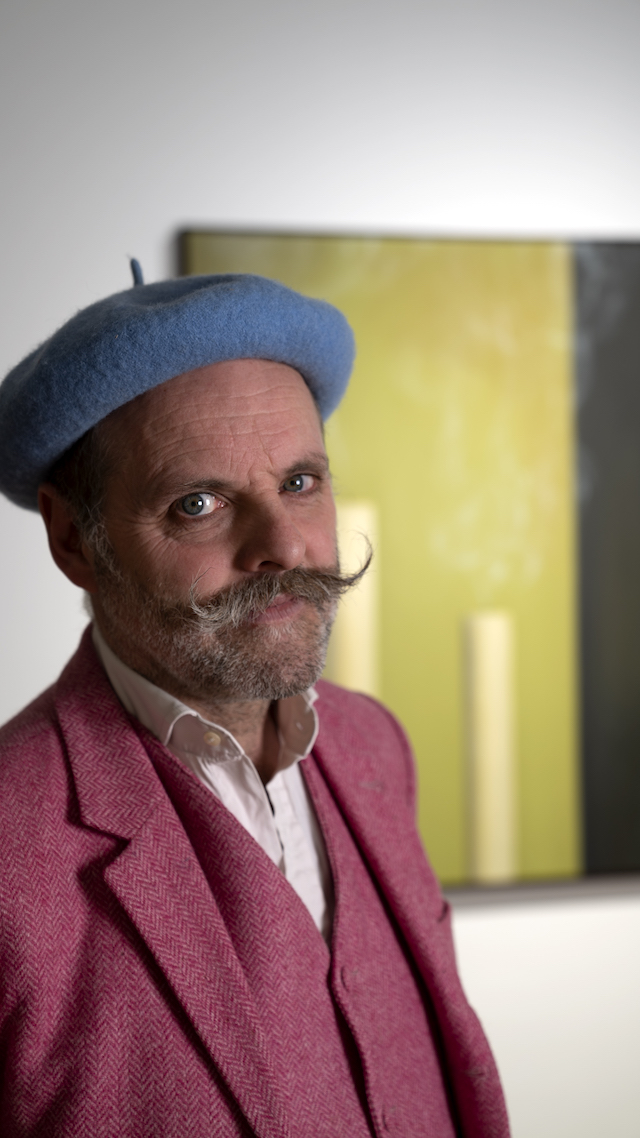
This show took me back to my teenage years listening to Sonic Youth in my bedroom. Was Daydream Nation an album that was particularly important to you as a kid?
Well, the record was released in 1988, when you had this kind of economy of the music and the image coming together, and, for me, it was always a really interesting juxtaposition between this quiet, sombre painting of a candle, with a very pared down murky background, and this layered American art punk. The image stuck in my head, and I actually went on from that image to find out about Richter. I went to his show at the ICA in the same year, which was a series of paintings of those members of Baader Meinhoff who committed suicide, or died in prison. It was a black-and-white and slightly blurred photo-realism that fed into my preoccupation with surrealism and modernism – looking at appropriation, and this idea of authenticity that plays out through quite specifically or graphically quoting someone else’s work. I mean, you are always in a quotation as an artist, and you are always, in a way, revealing or not revealing your sources – you’re always painting a self-portrait in a referential stream. I do think there’s a strong sense that you can’t quite see these paintings as straightforwardly as you would the Richter paintings – there’s a kind of a smoke screen, in that they have this debt, but there are no exact copies. They’re also not as well painted as his works, because I’m not really a painter. I learned a lot making them, and my respect for his paintings grew tremendously.
They seem quite a departure for you. There’s a very sombre, almost intense sadness and loneliness about them…
Yeah. When I started getting a few paintings up on the wall at the studio, I do remember feeling that it was quite sad. I kind of thought it was going to be more humorous when I began, in that unexpected way that the uncanny can kind of make you laugh, but it’s not. I suppose I’m experimenting with a different kind of exhibition. The last time I showed in this space, I had about 50 different works exhibited that were all totally different to one another, and it was very complicated as a show. This show is totally the opposite. What we’ve got here is almost the repetition of one idea, and the process seemed to be about almost continually returning to the same place. Maybe it actually reflects the whole lockdown experience – almost a portrait of the lockdown. It was a disturbing period, when I think everyone really had to get on with themselves, and it was probably the first time that I’ve actually had a lot of time to myself. I’ve always worked with assistants and people in the studio, and there’s always been a sea of people around. But the main bulk of this work was done very much in that period when I was alone.
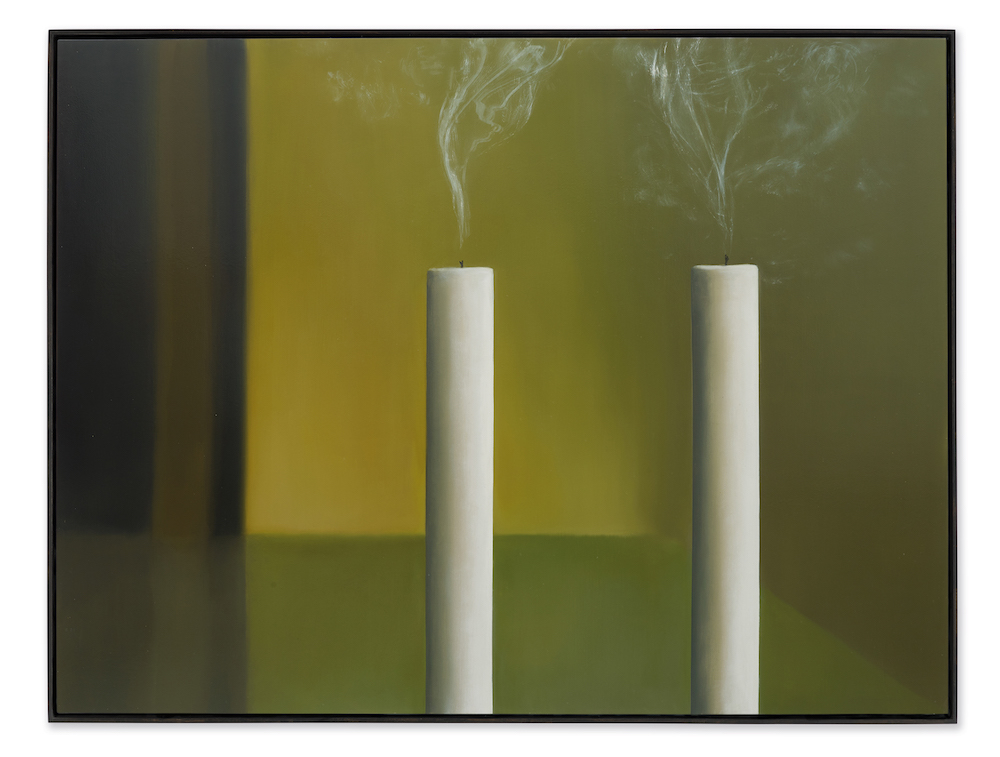
Do you think there was a kind of mass collective sadness, or mourning for a cancelled future at that time?
I think there was, probably, and the show probably taps into that. Normally, there’s some sort of humour in my work, and the humour in these is quite hard to find. I sort of found this word pathos when describing these paintings, which actually means a sort of sadness – so, maybe it’s partly about exploring that state of pathos. It also comes back very much to thinking about smoke. I’ve made lots of work about smoke over the years, and smoke, for me, is a sort of metaphor for something unwanted – the flame is about now, and it’s about being able to see, kind of like the sun, or a kind of energy, whereas the smoke is an afterthought and an after effect; something you don’t want in your lungs. When you think of the candles as a metaphor, it’s obviously a powerful thing because a candle is kind of like a clock, and it is definitely a sort of metaphysical structure – it creates shadows, and it disappears, becoming the air around us. I think, in that sense, the show does have this idea of being a metaphor for a kind of arrested moment with the snuffing out the candle – and this idea of the smoke being caught on canvas sort of reinforces ephemerality.
Is there an explicit spiritual or religious dimension at play here? Are there new concerns for you as you get older?
No. I’m not very religious. Actually, let’s re-answer that question. I’m irreligious. What I mean by that is that I respect other people having religions, and, in some ways, I feel almost envious that people do have their faith, and I appreciate that, but, for me, everything is very questionable. So, religion itself has to be questionable, and I’m not even necessarily talking about being agnostic. I do think there is something about quoting religious iconography in the show, and I’ve done that with other works in the past. I’ve made a bronze apple core, which obviously relates to the Adam and Eve story, and I’ve made a giant nail that sticks out in the pavement just behind St. Pauls – so, I’ve definitely created lots of quotes that explore ideas about art almost replacing religion, and the fact that the artist, at some point historically, was the person who made things that people would use in religion. I do think I’m probably acknowledging the function of the artist in religion in that way. It comes back to that referential stream – work always has to rub up against this unfinished program or project, which is called art.
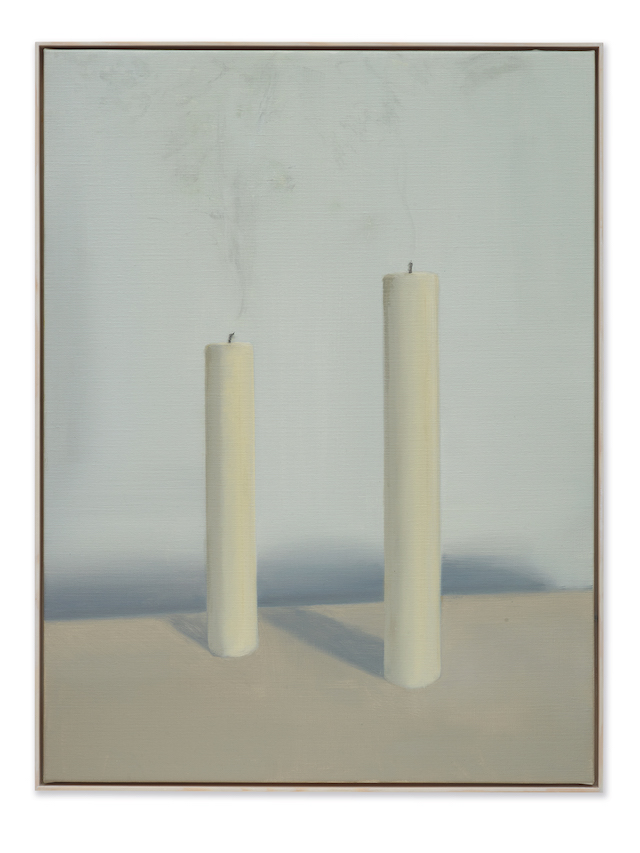
It occurred to me that during the pandemic we became a kind of daydream nation, and I wonder if a function of art is to provide a space for daydreaming?
I like that. I’ll take it. I think that’s probably why I became an artist, because I couldn’t quite stop myself from being a bit daydreamy – and by that I mean running along with my own thoughts and ideas in my head in a slightly Don Quixote type way, in which, you know, I will see a scenario out in the world, which isn’t necessarily there, or which I know isn’t there, but somehow, it’s still there (laughs). I think that artists do have that ability to kind of see things differently, and I think that is a good thing. I mean, for me, art is about audience, and the fact there is a dialogue, or a discourse. And I’m hoping that there’s a bit of the unexpected in this show. I’m playing with certain kinds of preconceptions that people might have about my work, and maybe I’m putting my foot in the door to another kind of experience of my work. I mean, with any artist, people will go, like, I know what that guy does, he does bin bags and, you know, he makes bronze sculptures and fake Warhol pictures, or whatever… But when you pull all of that reputation apart, and you’re not trading on that, you just come back to the idea that you’re really trading on the works of art themselves. And, in actual fact, when you’re able to sort of spend time and look at each particular work in this show, and deal with it in and of its own – you can look at each one and see different things, and have different feelings about them.
Kerze is at Ben Brown Fine Arts until January 14
